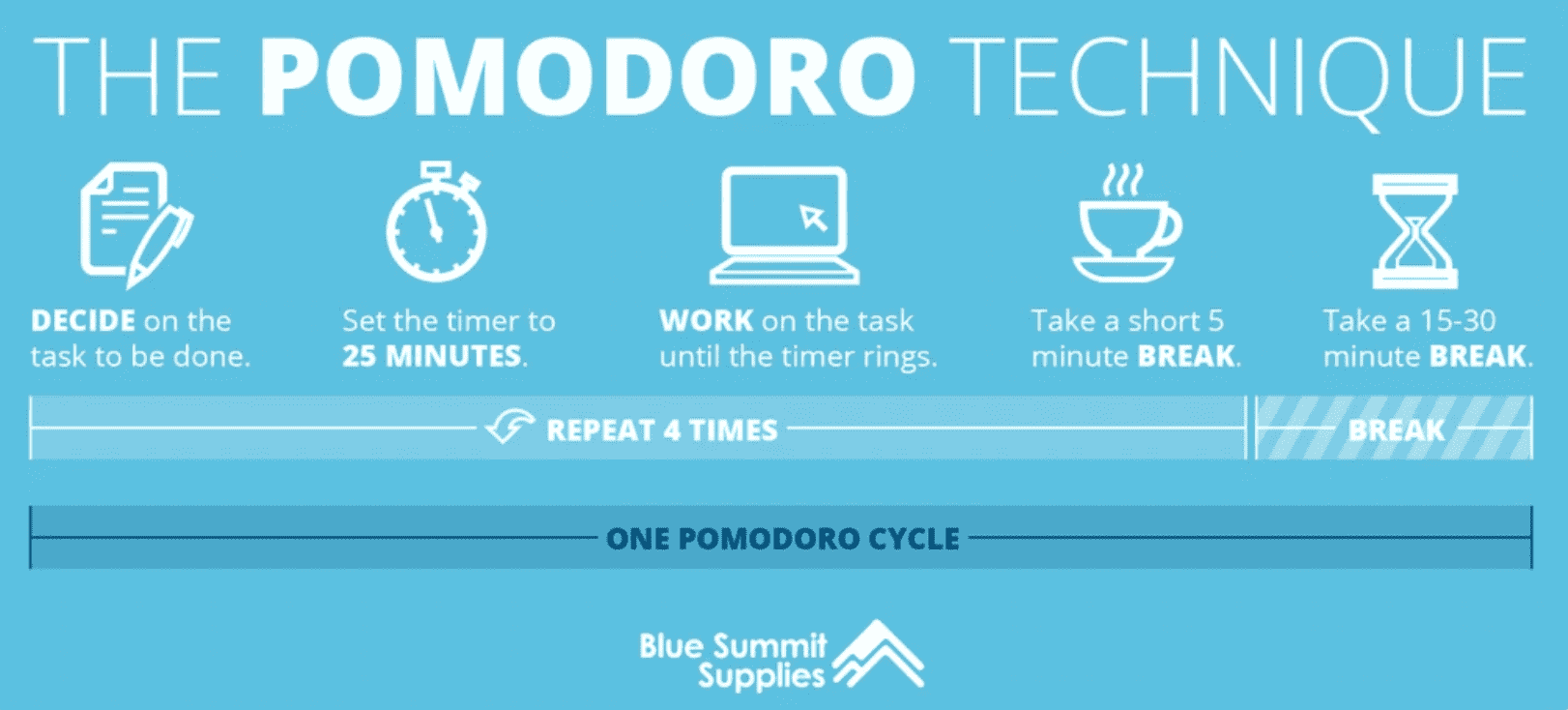Notes from "Pomodoro Technique Illustrated"

The Pomodoro Technique is designed to maintain focus and prevent burnout.
Preface
The name Pomodoro comes from a tomato-shaped kitchen timer that was used to manage bursts of work.
The book “Pomodoro Technique Illustrated: The Easy Way to Do More in Less Time” shows the Pomodoro Technique as the one action-planning technique that fits exactly as conceived into Agile approaches to projects. It’s a good book to learn the technique and become excellent at it.
Summary
The basic unit of work in the Pomodoro Technique can be split into five simple steps:
- Choose a task to be accomplished
- Set a timer to 25 minutes
- Work on the task until the Pomodoro rings, then put a check on your sheet of paper
- Take a 5-minute break (marks the completion of one Pomodoro)
- Every 4 Pomodoros take a 15-30 minute longer break

PDCA is an iterative problem-solving process that represents Plan-Do-Check-Act.
- Plan: Define the goals and processes needed to deliver the expected results
- Do: Implement the process
- Check: Measure the process and compare the results to the expected outcome in order to find discrepancies
- Act: Analyze the discrepancies and try to understand the root cause of them
This particular type of planning, monitoring, measuring, and improving is also the core of the Pomodoro Technique.
The Pomodoro Technique gets us to focus on execution. It could mean that we ignore Systems Thinking and holism. That’s why it’s often beneficial to let processes like Scrum, XP, or GTD enclose the Pomodoro Technique.

Thinking
From this book, I’ve learned about the 25/5/15 time management method, the scientific theory of the daily Pomodoro Technique PDCA Cycle, how to handle interruptions and customize my own process.
I plan every morning and review in the evening, concentrating on a single activity in a Pomodoro. No longer feel anxious, because all tasks just become the activities made up of Pomodoros.